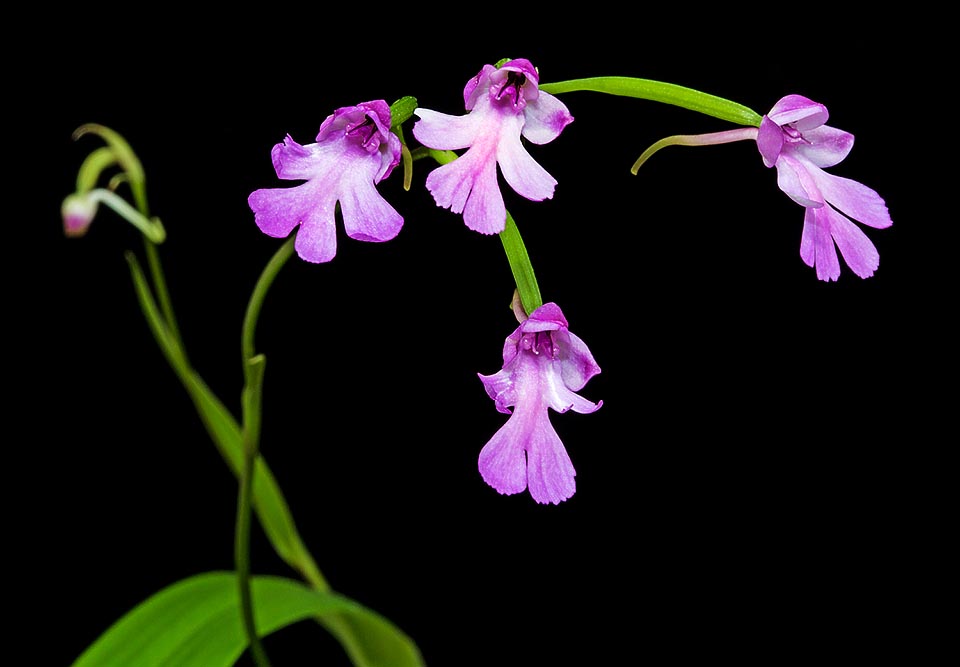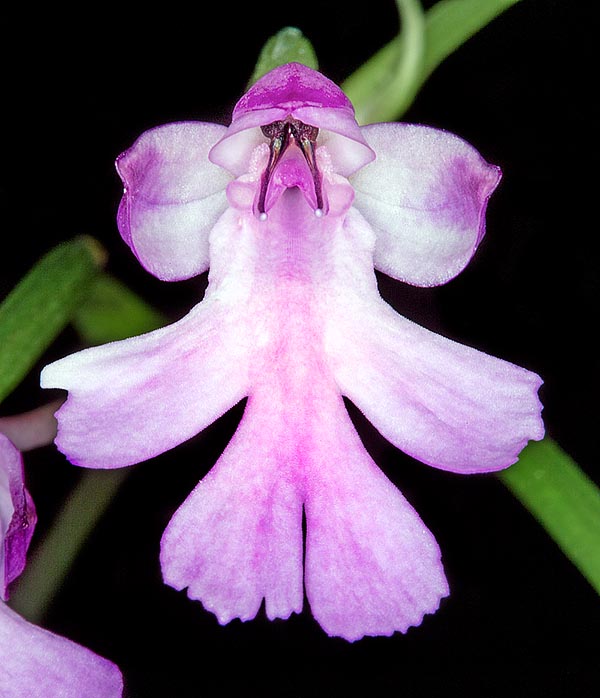Family : Orchidaceae

Text © Pietro Puccio

English translation by Mario Beltramini
The species is native to Madagascar, Mauritius and Réunion where usually grows in the humid forests on rocks covered by vegetable debris and moss, less frquently as epiphyte on the trees, from the sea level up to about 1700 m of altitude.
The name of the genus is the combination of the Greek substantives “κύων, κυνός” (cyon, cynós) = dog and “ὄρχις” (orkis) = testicle, with reference to the shape of the tubers; the specific name is the Latin adjective “purpurascens, entis” = tending to purple, with reference to the colour of the flowers.

The Cynorkis purpurascens is a terrestrial orchid, at times epiphyte, deciduous, with two fleshy tubers and 1-2 basal leaves, 20-45 cm long © Giuseppe Mazza
Racemose terminal inflorescence, compact, on an about 25 cm long erect peduncle, bearing up to more than 30 flowers, on a pedicel and ovary 2,5-4 cm long, of pale pink to purple colour, of about 2,7 cm of diameter; is present in nature also in an albino form.

Long lasting inflorescences with even 30 elements. Should deserve a greater horticultural diffusion © Giuseppe Mazza
The species is self-pollinating.
At amateur level it reproduces by division of tillered plants. Little cultivated species that should deserve a greater diffusion due to the long lasting blooming, of some months.
Deciduous, requires medium-high temperatures, 22-30 °C, when in vegetation, slightly cooler during the rest period.
The watering regime must carefully follow the trend of the vegetation, at the vegative restart, in spring, gradually begin the waterings, paying particular attention not to leave water on the emerging leaf, in order to maintain the substratum constantly humid, but without stagnations, at the end of the cycle, when the leaf falls, the waterings are to be suspended maintaining the substratum only just humid.
It is usually cultivated in pot with organic loam particularly draining and aerated, to renew frequently being the tubers easily subject to rottenness when the substratum tends to deteriorate.
Fertilizations, during the vegetative period, duly alternated with the waterings to avoid salts accumulations, utilizing a hydrosoluble balanced fertilizer, with microelements, at 1/5 the dosage, or less, than what suggested on the package.
The species is reported in the appendix II of the CITES (species whose trade is internationally ruled).
→ For general notions about ORCHIDACEAE please click here.
